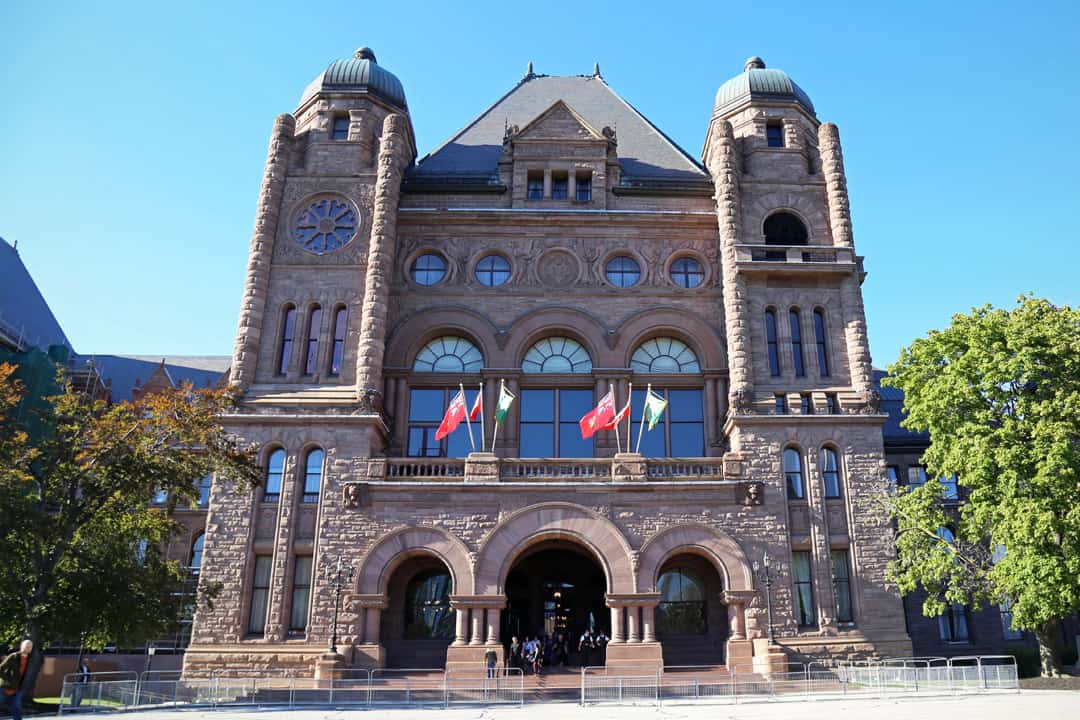According to an analysis by The Varsity, undergraduate domestic students at U of T received increasing amounts of support from the Ontario Student Assistance Program (OSAP) from 2013–2018. Over 62 per cent of domestic students in 2017–2018 received over $150 million in loans and $180 million in grants from the province. At the same time, domestic enrollment had slowly curbed by about 1,365 students since 2013.
In particular, the Mississauga and Scarborough campuses had higher percentages of undergraduate domestic students that received financial aid, with 65 per cent and 77 per cent, respectively, of students receiving financial aid in 2017–2018.
What is OSAP?
Established in 1966 as the Province of Ontario Student Award Program, OSAP is administered by Ontario’s Ministry of Colleges and Universities (MCU) to assist students in paying for tuition, school-related fees, and other costs associated with attending a postsecondary institution. Canadian citizens, permanent residents, or protected persons residing in Ontario can apply for OSAP.
Under former Premier Kathleen Wynne and her Liberal government, OSAP was reformed to provide “free tuition” — or grants equaling to around the average undergraduate tuition cost — to students with a household income of $50,000 or less. The changes began to take effect in September 2017, and radically redesigned the financial assistance program so that students would receive base funding calculated from the student’s family income and additional needs-based funding, depending on financial need.
In 2019, the Progressive Conservative government, led by Premier Doug Ford, announced another round of reformations to OSAP, including the elimination of the six-month interest-free grace period for loan repayments, a shift from student reliance on grants to loans, and the decreasing of grants and loans provided to students with a household income of over $50,000.
The announcement came with an additional 10 per cent cut to domestic tuition — which is regulated by the province — saving an average domestic first-year Arts & Science undergraduate student $678 per year.
Increased reliance on grants
The Varsity’s analysis, conducted using U of T’s available data on OSAP loan rates and domestic undergraduate population, shows a marked increase in grants for 2017, the year the Wynne government’s changes went into effect.
The number of OSAP recipients among undergraduate students increased by 3,580 over the five-year timeframe — during which loans steadily decreased and were made up with grants until 2017–2018, when grants overtook loans as the main source of financial assistance for students. From $43 million in 2013 to $180 million in 2017, a higher proportion of student grants was given to a decreasing number of students — from 48,753 in 2013 to 47,370 in 2017.
Besides first-hand accounts, it’s unclear how the Ford government’s emphasis on loans-based financial assistance will affect students at U of T as OSAP shifts from the Wynne system to the Ford system.
Domestic enrollment is set through targets agreed upon between the province and the university in their triennial Strategic Mandate Agreement. A previous Varsity analysis of international student tuition found that the university has been increasingly relying on tuition fees from international students. In 2019, international student tuition fees constituted 30 per cent of the university’s revenue — nearly a billion dollars — more than the 25 and 24 per cent that provincial grants and domestic tuition provided, respectively.


